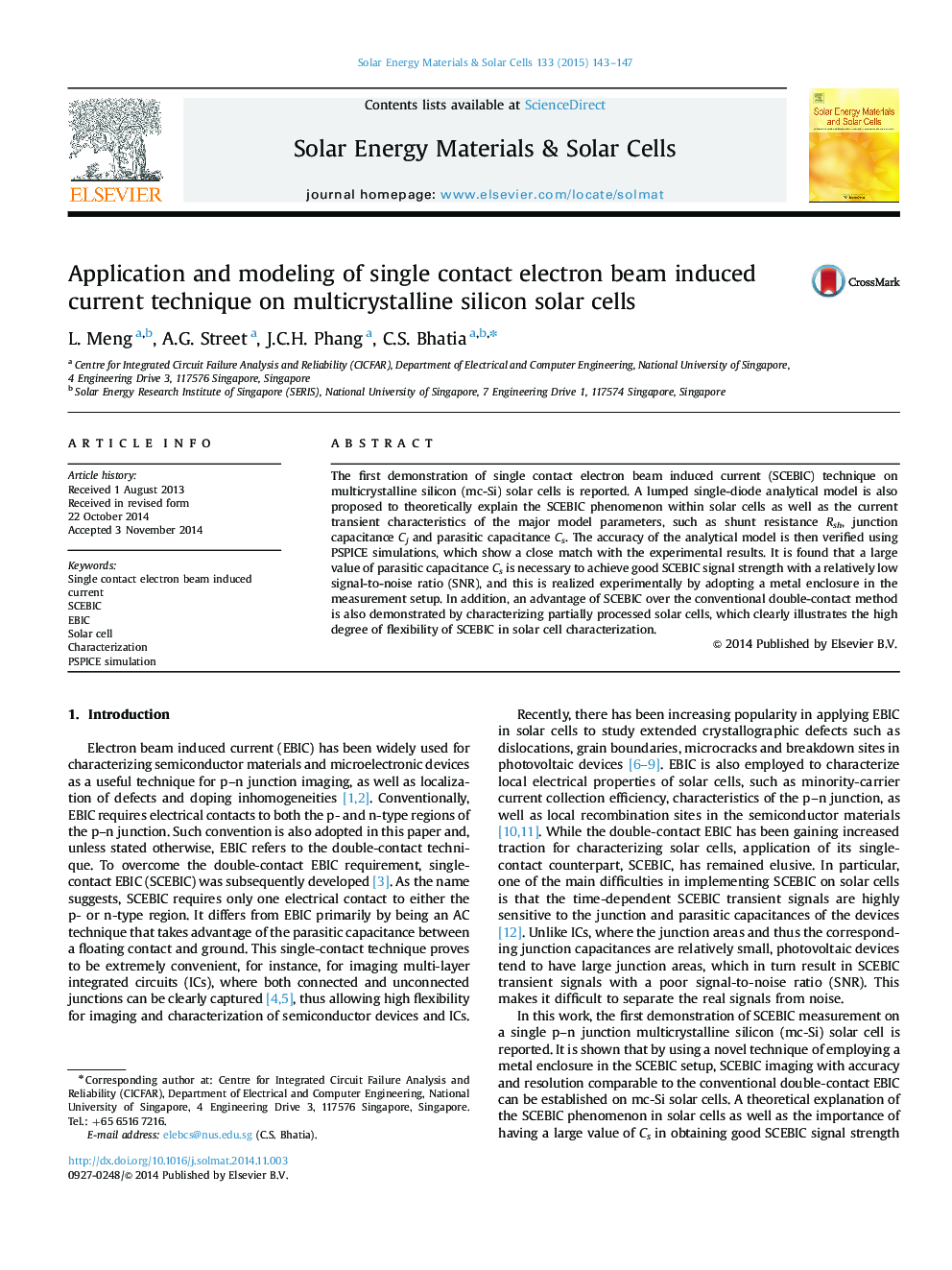| Article ID | Journal | Published Year | Pages | File Type |
|---|---|---|---|---|
| 6535301 | Solar Energy Materials and Solar Cells | 2015 | 5 Pages |
Abstract
The first demonstration of single contact electron beam induced current (SCEBIC) technique on multicrystalline silicon (mc-Si) solar cells is reported. A lumped single-diode analytical model is also proposed to theoretically explain the SCEBIC phenomenon within solar cells as well as the current transient characteristics of the major model parameters, such as shunt resistance Rsh, junction capacitance Cj and parasitic capacitance Cs. The accuracy of the analytical model is then verified using PSPICE simulations, which show a close match with the experimental results. It is found that a large value of parasitic capacitance Cs is necessary to achieve good SCEBIC signal strength with a relatively low signal-to-noise ratio (SNR), and this is realized experimentally by adopting a metal enclosure in the measurement setup. In addition, an advantage of SCEBIC over the conventional double-contact method is also demonstrated by characterizing partially processed solar cells, which clearly illustrates the high degree of flexibility of SCEBIC in solar cell characterization.
Related Topics
Physical Sciences and Engineering
Chemical Engineering
Catalysis
Authors
L. Meng, A.G. Street, J.C.H. Phang, C.S. Bhatia,
